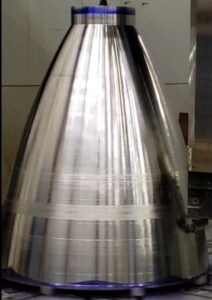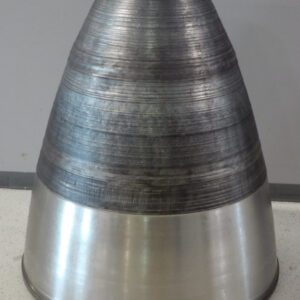Powder DED Applications
Powder DED Applications
Innovative Applications of Powder Laser ED and Cold Spray Technology
Powder Laser Deposition and Cold Spray technology have emerged as versatile solutions in the fields of coating, repair, and blank production. Powder Laser ED excels in enhancing the durability of metallic surfaces, repairing worn components, and creating near net-shaped blanks for cost-efficient machining. Similarly, Cold Spray has proven its value in maintenance and repair, particularly in the aerospace industry, while also finding niche applications in additive manufacturing, especially with high-deposition materials like aluminum and copper. These technologies are reshaping industries by offering innovative and cost-effective alternatives to traditional methods.
What you will learn in this section
Explore Applications
Explore typical application categories for Powder DED technologies
Understand Process Fit
Learn how part geometry, material type, and resolution needs influence which Powder DED technology is most suitable.
Review Real-World Examples
Analyze actual parts made with Powder DED—from turbine blade repairs to gearbox housings and Pelton turbine runners.
Powder Laser ED applications
Coating, repair and blank production
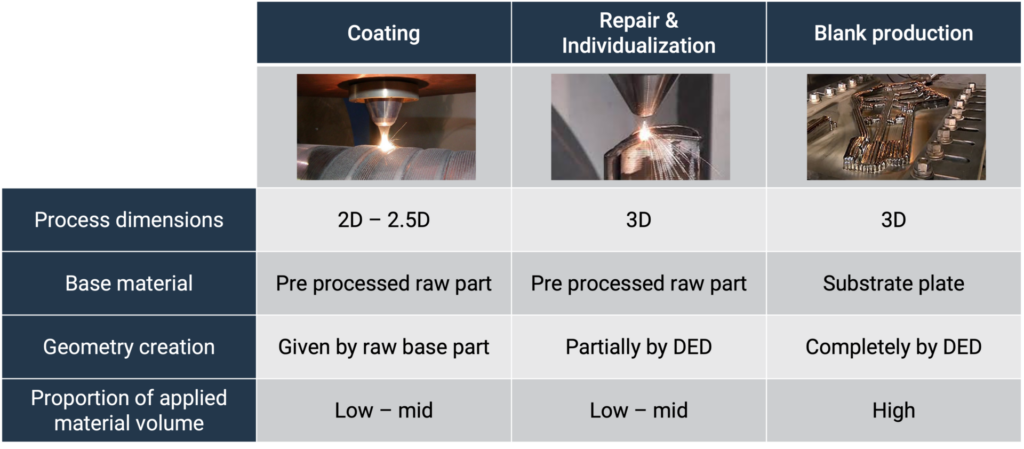
Three main fields of applications for Powder Laser Deposition exist. The first application group represents coating of metallic surfaces. Drilling tools for oil and gas industry are examples. These are subjected to large forces and wear and would not reach long lifetimes without protective coating. Such wear protections can be made from different wear resistant alloys and often are a mix of carbides and a nickel-based powder as matrix.
A second typical application group includes the repair of metallic components, such as molds, valves and worn turbine blades. Here, Powder Laser Deposition is replacing many traditional manufacturing processes such as gas metal arc welding and thermal spraying. Besides repair applications, Powder Laser Deposition is also used for local strengthening of structures or for adjustment and individualization of the geometry by locally applying additional material.
The third key application area is the fabrication of near-net-shape blanks for end-part production. These blanks are produced with minimal material offset, enabling efficient and cost-effective subsequent machining. As part size increases, more productive wire-based DED processes are often preferred for producing parts from scratch. This shift is primarily driven by the lower cost of wire feedstock and the higher deposition rates, which together contribute to significantly reduced overall manufacturing costs.
Cold Spray applications
From Repair to Rapid Production of Large-Scale Blanks
Coldspray technology is so far mostly utilized for coating or maintenance and repair. It is a cost-effective process that has shown great potential in the repair of damaged components, due to its capability to avoid any thermal damage to the underlying substrate material. During the past decade, Coldspray has been successfully applied to repair components from aerospace industry. Lately, the technology has been increasingly used to repair critical infrastructure in the defense sector.
Especially the machine technology from SPEE3D, however, is actively targeting dedicated AM applications. Due to the process’s low resolution, the spot size is usually several millimeters in diameter and results in high surface waviness. Overall, it is used to create near net-shape blanks. Especially in aluminum and copper the process yields a very high deposition rate of up to 1,000 cm³ per hour, which results in fast and economic production of low volume blanks. The hybrid system from HERMLE is mostly used to create large hot forming molds with surface conforming cooling channels. For the creation of the channels, HERMLE uses a patented water-soluble material which is subsequently sprayed to the tool steel and dissolved from the mold after the production is finished. This way molds of up to 400 kg of weight can be produced.
Powder vs. wire DED applications
Overlapping Applications, Diverging Strengths
There is significant overlap in applications between wire and powder DED. High-productivity powder DED systems with powerful lasers can rival wire DED. However, for very large or massive parts, wire DED remains the preferred choice.
Today, powder DED is predominantly used for coating, repair, and part individualization. While it can also be applied to produce near-net-shape blanks, this market is currently served almost exclusively by wire DED.
Pipe flange

User
Airbus/PFW
Industry
Aviation
Material
Titanium
Technology
Powder Laser Energy Deposition
Classification
Qualified end part
This aerospace pipe flange of an Airbus 350 is manufactured on a BeAM system in Ti64 in under 2h. Main advantage by material and weight reduction and milling waste reduction. Buy-to-fly ration of 9:1 optimized to 2:1. Courtesy of BeAM.
Tooling mount
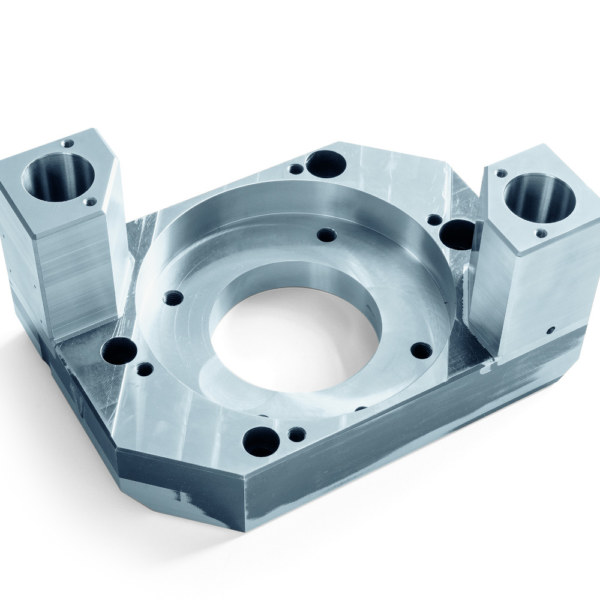
User
Schaeffler
Industry
Tooling & Molding
Material
Steel
Technology
Powder Laser Energy Deposition
Classification
Tools and fixtures
This tooling mount is usually machined from a complete block. By printing a raw part via powder feed laser energy depositioning, the material amount and cost were reduced. Courtesy of Schaeffler.
Ring for core mold
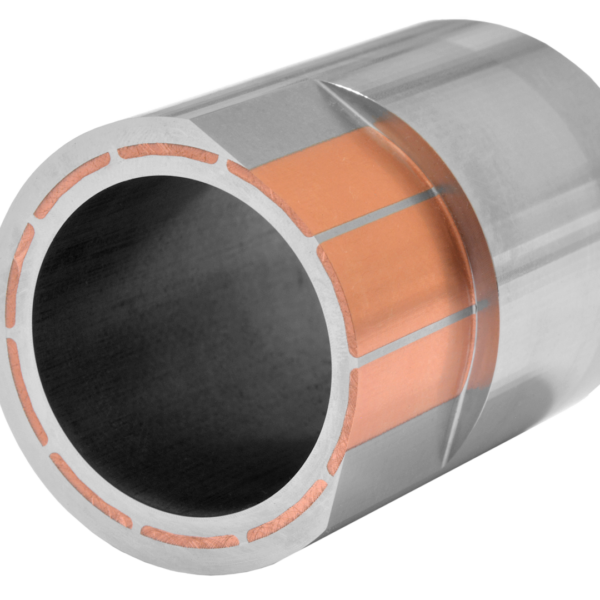
User
Hermle Maschinenbau GmbH
Industry
Industrial
Material
Copper
Technology
Cold Spray
Classification
Not qualified end part
This tooling mount is usually machined from a complete block. By printing a raw part via powder feed laser energy depositioning, the material amount and cost were reduced. Courtesy of Schaeffler.
Headlight mold tool
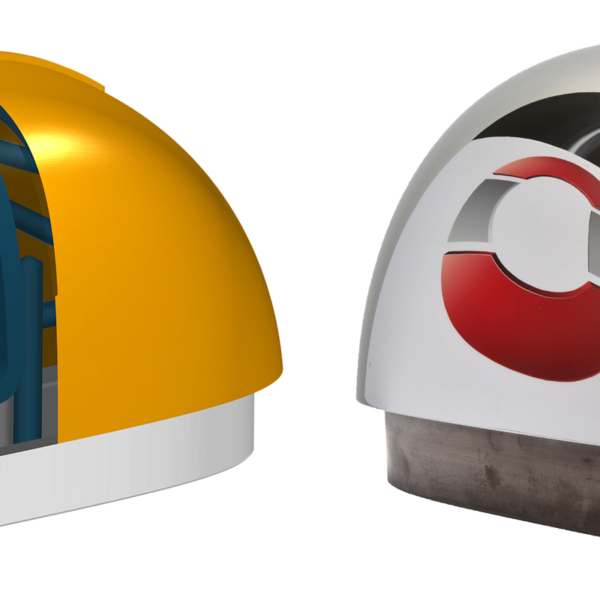
User
Hermle Maschinenbau GmbH
Industry
Automotive
Material
Stainless Steel
Technology
Cold Spray
Classification
Molds
The tool is used to produce head lights for cars. It was produced by Hermle Maschinenbau’s hybrid system of Coldspray and CNC machining. The part includes conformal cooling channels. Due to high surface qualitfy requirements, the tool was highly polished after AM production and CNC machining. No pores were visible. Image courtesy of Hermle Maschinenbau GmbH.

